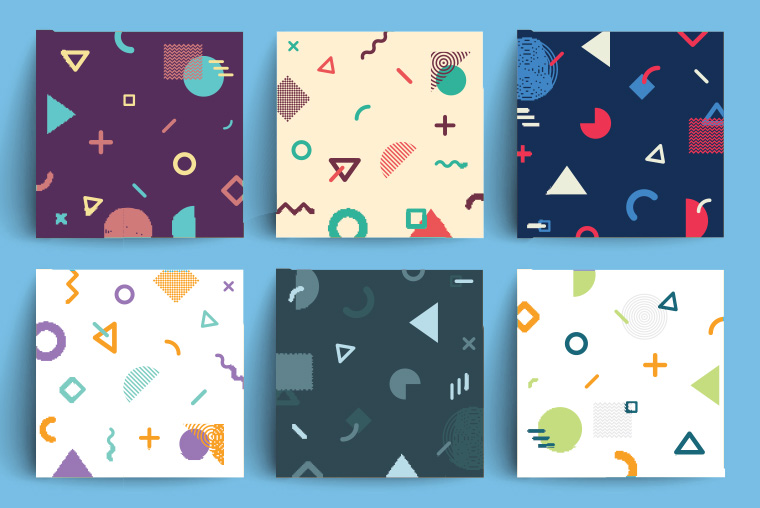Are you planning a website redesign or overhaul in the next year?
Your instinct might be to browse competitor websites, take a look at templated themes designed for your industry, or stalk Pinterest or Instagram for current designs that speak to you.
While this strategy would result in a beautiful and functional website, there’s also value in looking to the future.
What design elements, layout styles, or functionalities will be the most impactful now, but also in the months and years to come?
A website can function as a work of art, but its primary purpose is a selling tool.
Visitors need to land on your site and complete an intended action, whether that’s signing up for a newsletter, making a purchase, or filling out a contact form.
The way visitors engage with and respond to website designs changes over time, sometimes dramatically.
Ten years ago, it was accepted that you would have to navigate a minefield of popups just to load a page.
Visitors would dutifully pinch and squeeze at the screen in an effort to read non-mobile-friendly content on their cell phones.
These behaviors are no longer tolerated by visitors or, in many cases, by Google.
What to Consider on Your Next Website Redesign
As you plan your website redesign, consider what elements of current design might be outdated at best, or hostile at worst.
Next, it’s important to familiarize yourself with the latest in web design, and separate temporary trends from new developments that will have a positive, lasting impact on your business objectives.
What trends are web designers and their clients expected to embrace in the year to come?
Here are some some of the prevailing trends that are growing in popularity.

1. Personalization
You can expect to see a more personalized user experience based on a visitor’s personal preferences.
This personalization starts in early in the design process by conducting user testing with the types of visitors who will actually interact with the website once live – not just other employees at the web design agency.
As the sitemap is developed and the build begins, you can expect to see content-specific page adaptions and dynamic content that caters to particular target markets and audiences.
You can serve a particular landing page based on geo-location to deliver a personalized experience to each user that makes it easier to complete the intended actions in a comfortable environment.
How to stay ahead of the curve?
Study your audiences and create personas to understand what types of users your website can speak to.

2. Voice User Interface (VUI)
Audio is growing and it’s becoming smarter and more sophisticated.
Voice search will begin providing more optimized search results for content while evolving to feel more approachable and conversational.
The biggest challenge? Web designers will need to decide how best this filters into their current designs.
SEO and content strategy experts will want to keep an eye on how VUI adapts with traditional keyword-driven pages and content.
If you are not yet incorporating SEO into your web design process, this should be a priority.
Content should be structured in a way that makes logical sense to users and Googlebot, while factoring in the distinct patterns of how users phrase queries using voice search versus text search.

3. Chatbots & Machine Learning
Who doesn’t like getting quick answers and instant feedback?
The efficiency of chatbots is that they’ll collect feedback and take a user’s questions to grow and improve – making for a more personalized user experience.
The popularity of these systems will be great for providing users with instant responses when filtering viewers to appropriate content, while improving efficiency and time-saving for customer support teams.
Want to take it to the next level?
Use Google Analytics event tracking to measure how users interact with your chatbot and better identify and resolve drop-offs.

4. Augmented Reality (AR)
One of the biggest (and most interesting) challenges to come will be augmented reality.
Some companies are already using this medium to promote products in a new first-person experience way – but the trend can be expected to grow, especially when it comes to understanding how products, clothing, and furniture fit into a user’s life.
While this feature may be a little ambitious for your average small business or eCommerce website, there are related principles that you can adopt.
Something as straight-forward as embedding a Google Maps store walkthrough will be an easy way to enhance the experience for your visitors and blend the web with reality.
5. Minimal Interfaces & Card Layouts
Minimalism is still a prominent design direction and you can expect that to continue due to its cleanliness and easy usability.
This is even more imperative with the continued shift to mobile browsing. Mobile users should never be treated as an afterthought.
Card-based layouts will also be a notable style as they make websites simple to navigate and are great for displaying content.
How do you make this work?
You must be able to balance your content and your white space to limit distractions and allow users to navigate easily between items.

6. Geometry & Illustration
You’ll also begin to notice more animated iconography and a geometry-based focus in design elements and loaders as we move forward.
These animations give your page personality and make it feel more lively.
It’s also a nice touch to make your content feel more responsive to a user.
Other noteworthy graphics will be in organic shapes and animated GIFs.
Moving On
So what can we say goodbye to?
Expect to see websites abandoning the parallax effect due to its impact on website speed and user experience.
We expect to see less complex typography in favor of simpler, more mobile-friendly fonts.
Finally, general clutter on the page is no longer in fashion – understandably so. A “less is more” approach that prioritizes the intended user journey is the key.
Conclusion
If you are in the early planning stages of a new website, many doors of opportunity are now open to you.
Consider what business objectives you hope to achieve with the new site – more sales, more brand awareness, more content downloads – and embrace the new web design trends that will help you achieve these goals.
By the time your new website is ready to launch, you will be ahead of the curve and poised for lasting success.
More Resources:





![AI Overviews: We Reverse-Engineered Them So You Don't Have To [+ What You Need To Do Next]](https://www.searchenginejournal.com/wp-content/uploads/2025/04/sidebar1x-455.png)